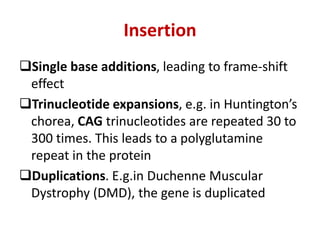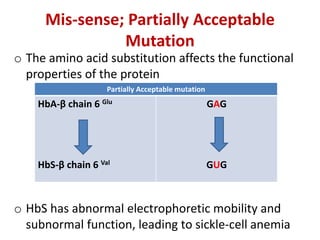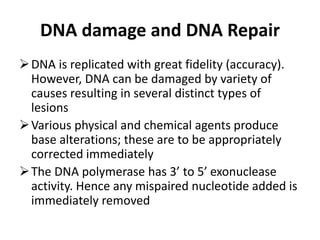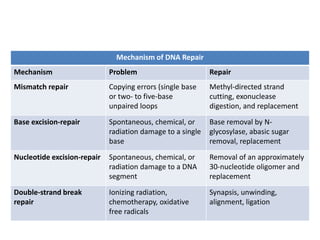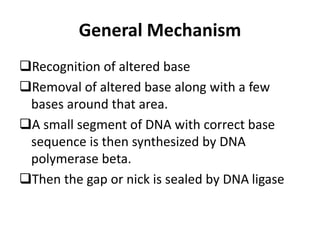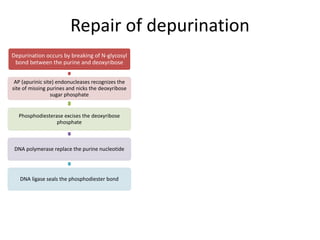Mutation is a change in the nucleotide sequence of DNA. Mutagens such as chemicals, radiation, and viruses can induce mutations by damaging DNA. There are several types of mutations including point mutations, insertions, deletions, and frameshift mutations. DNA repair systems help maintain the integrity of DNA and correct mutations by recognizing and removing damaged DNA and replacing it. Defects in DNA repair genes can lead to genetic disorders associated with cancer predisposition or accelerated aging.





